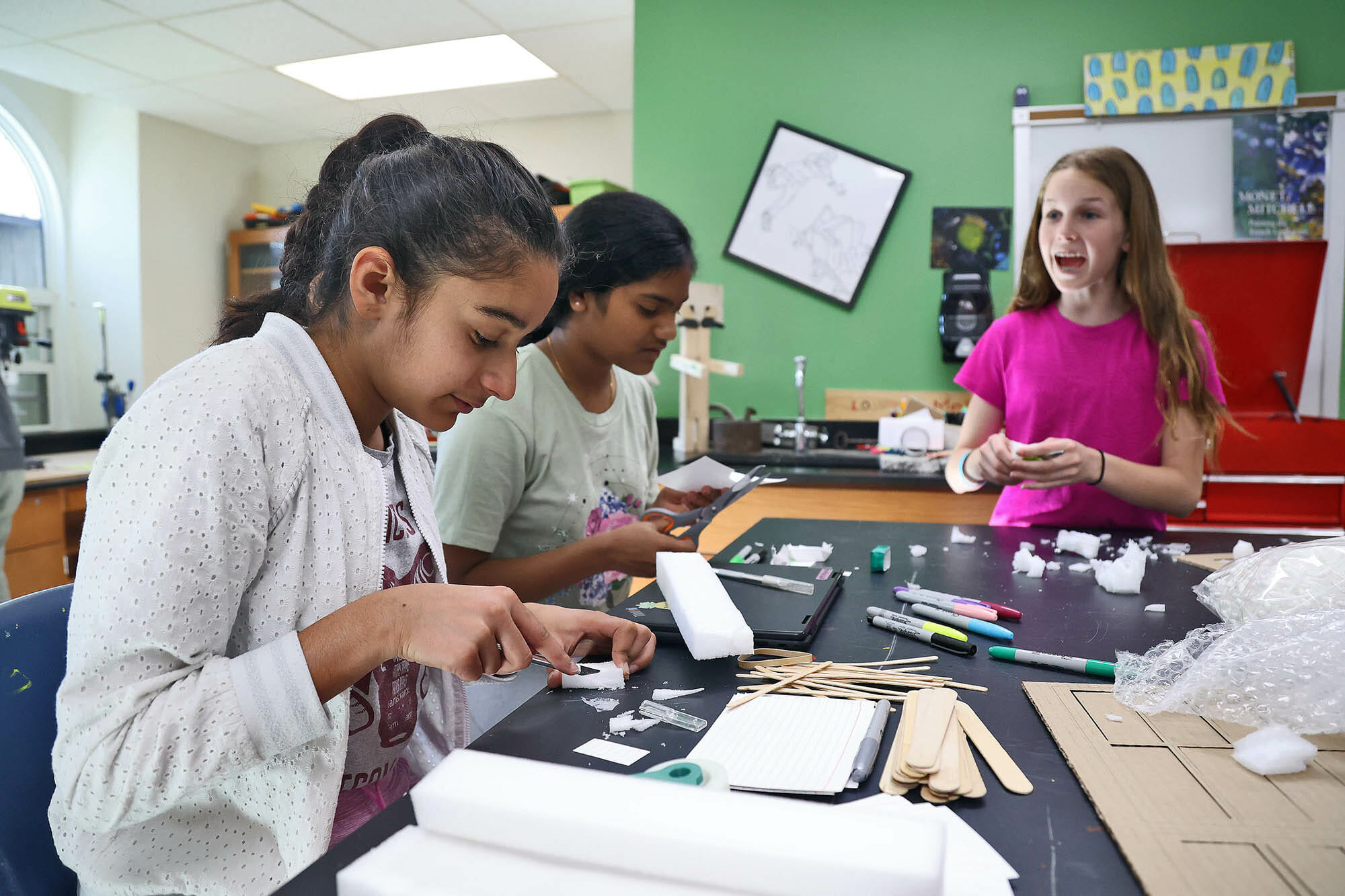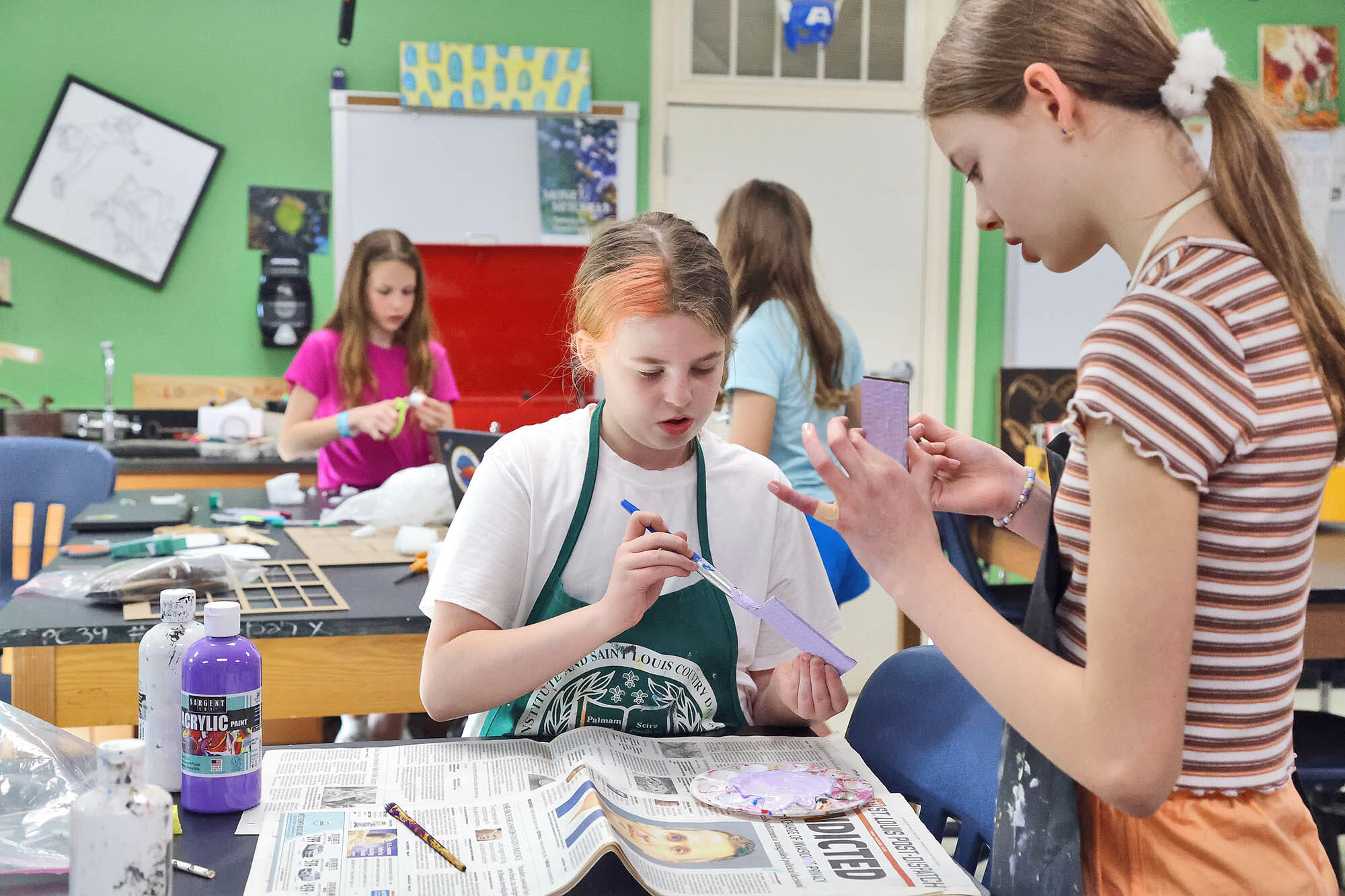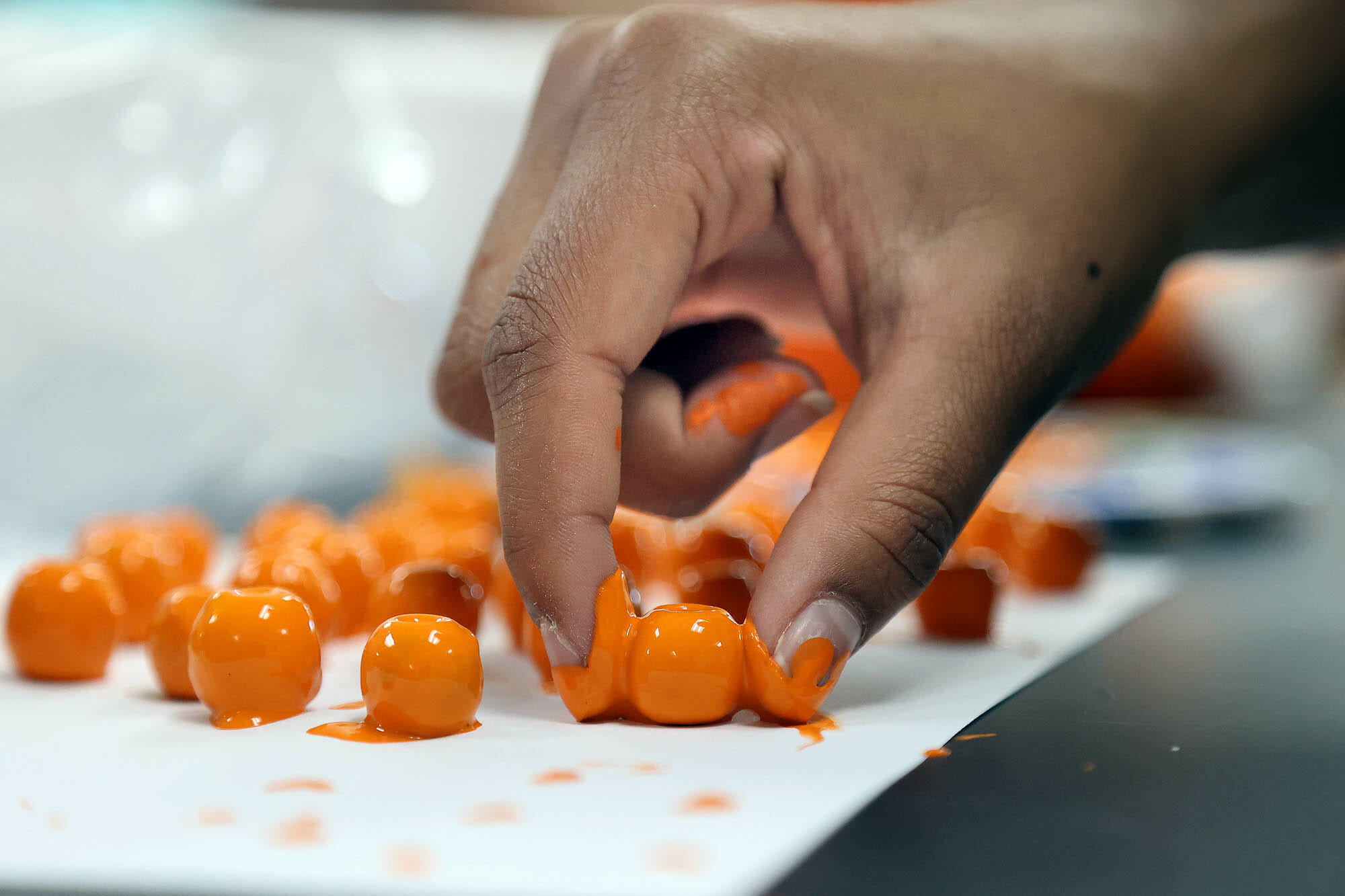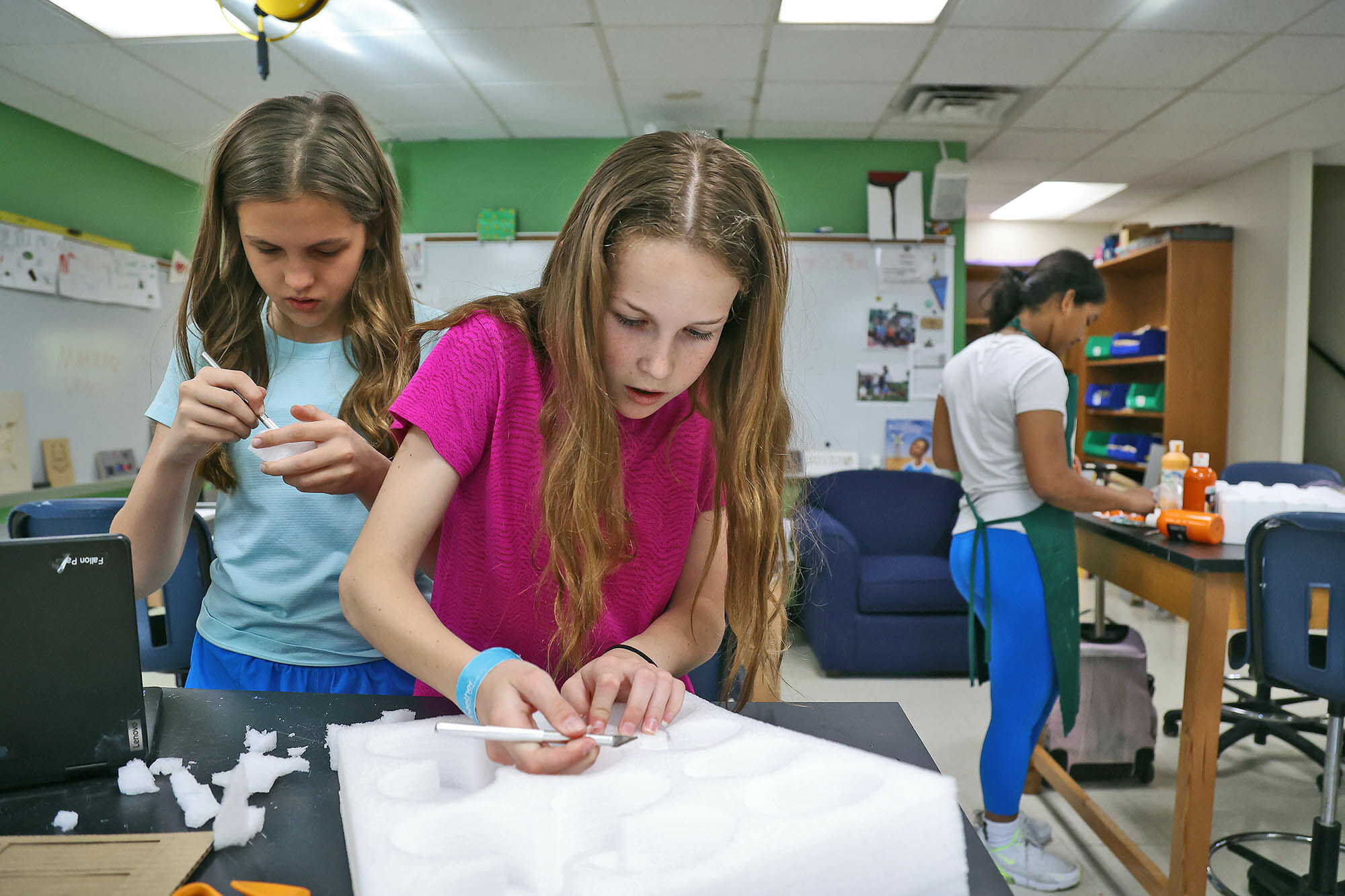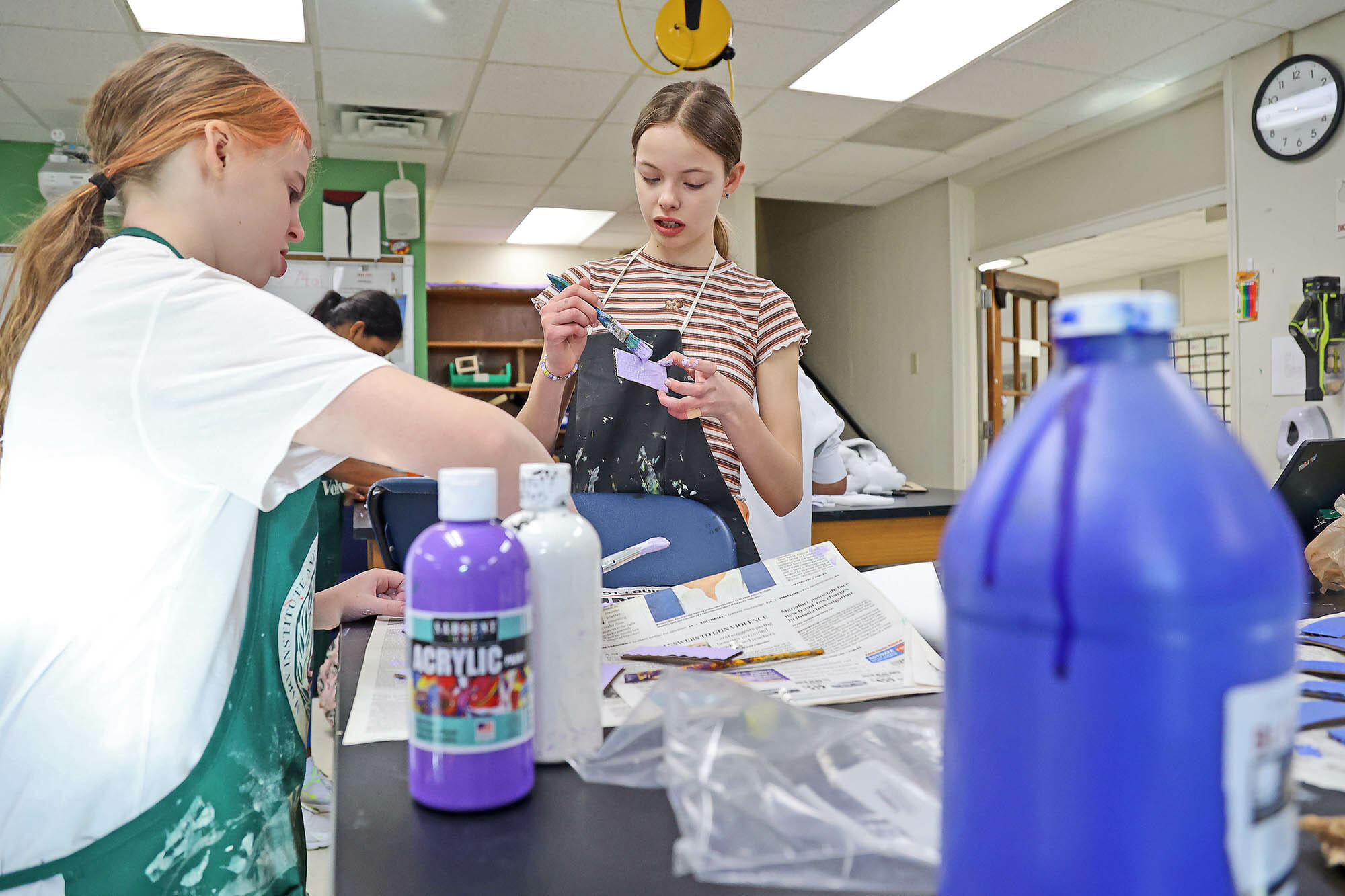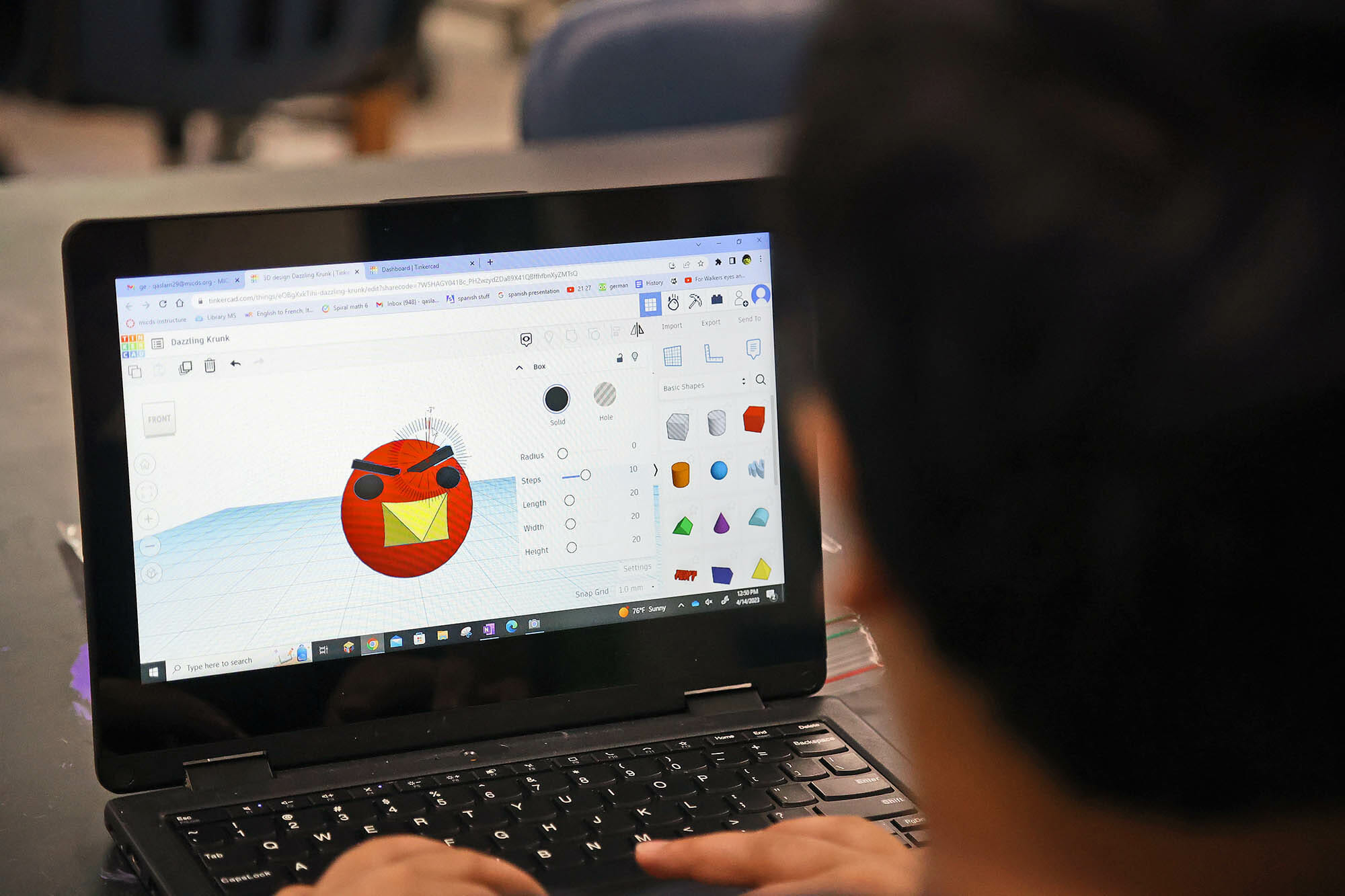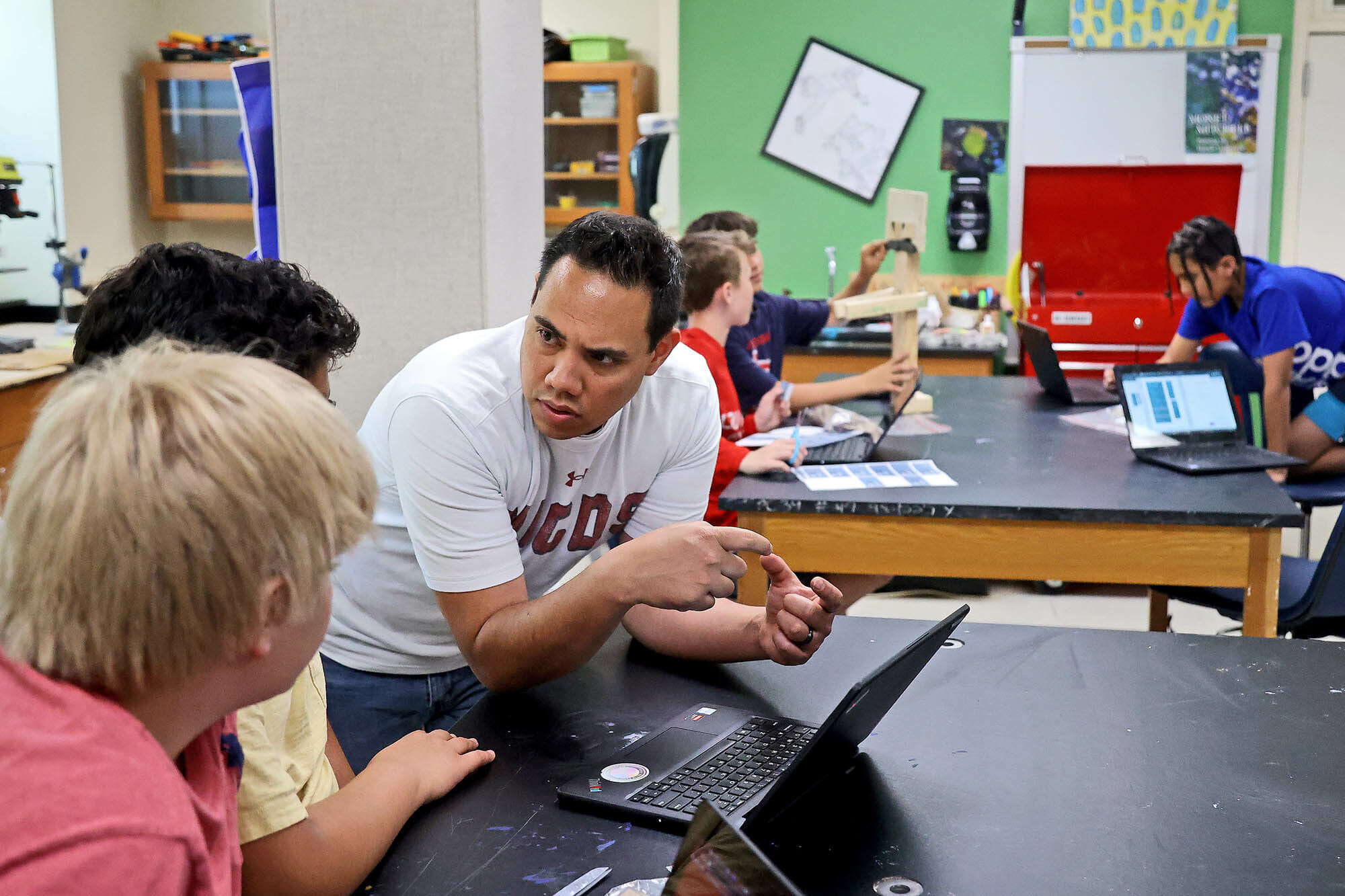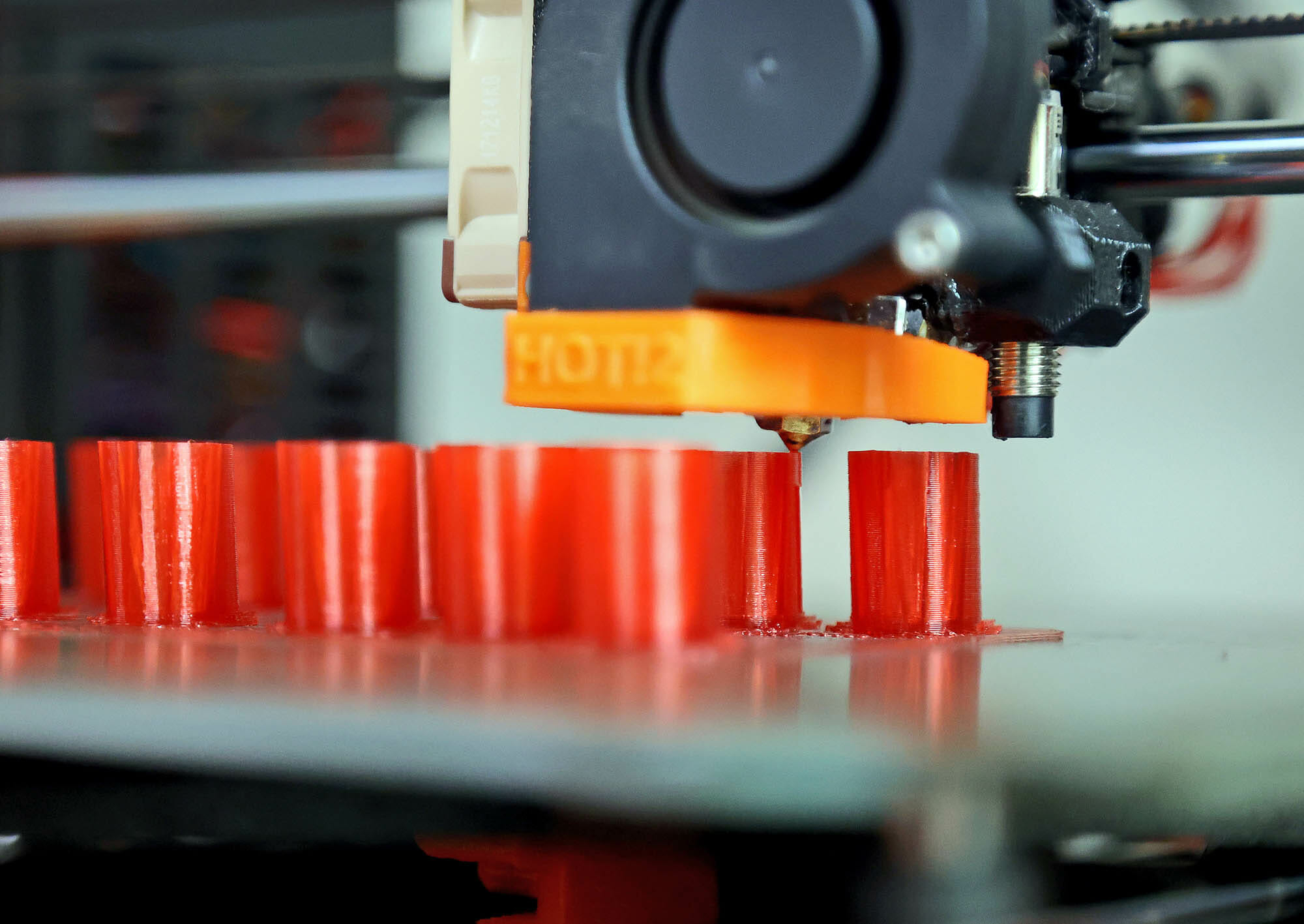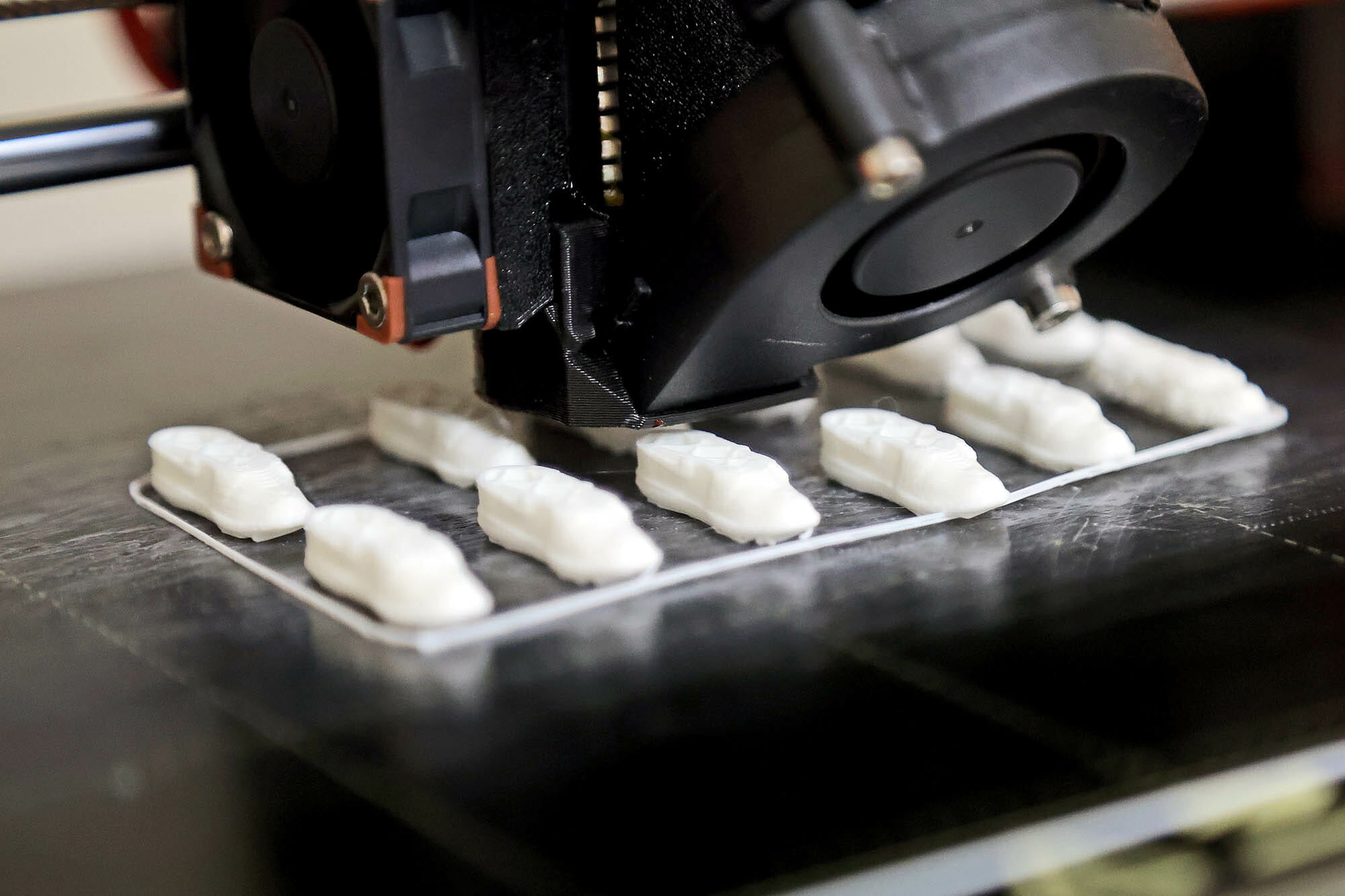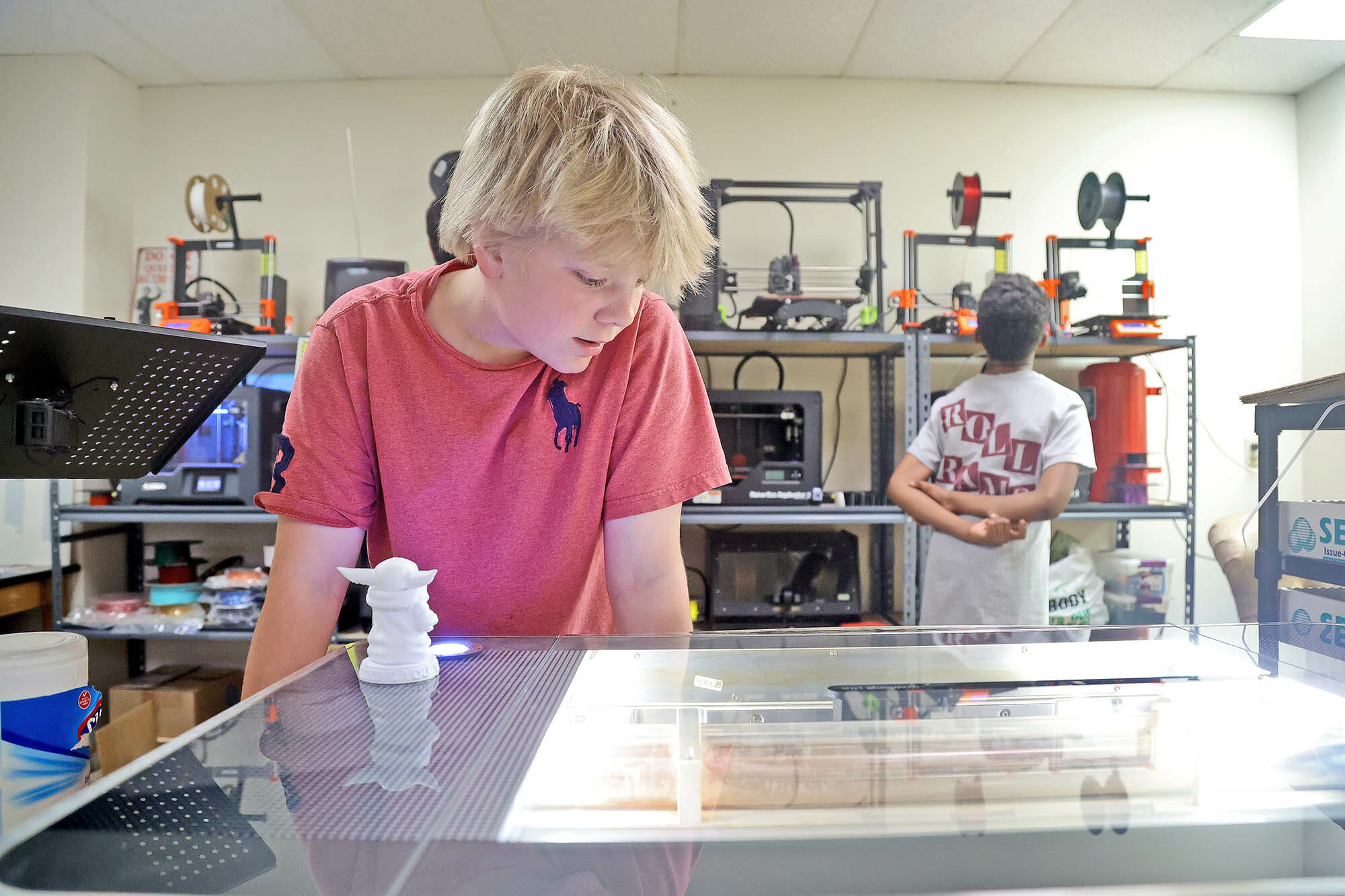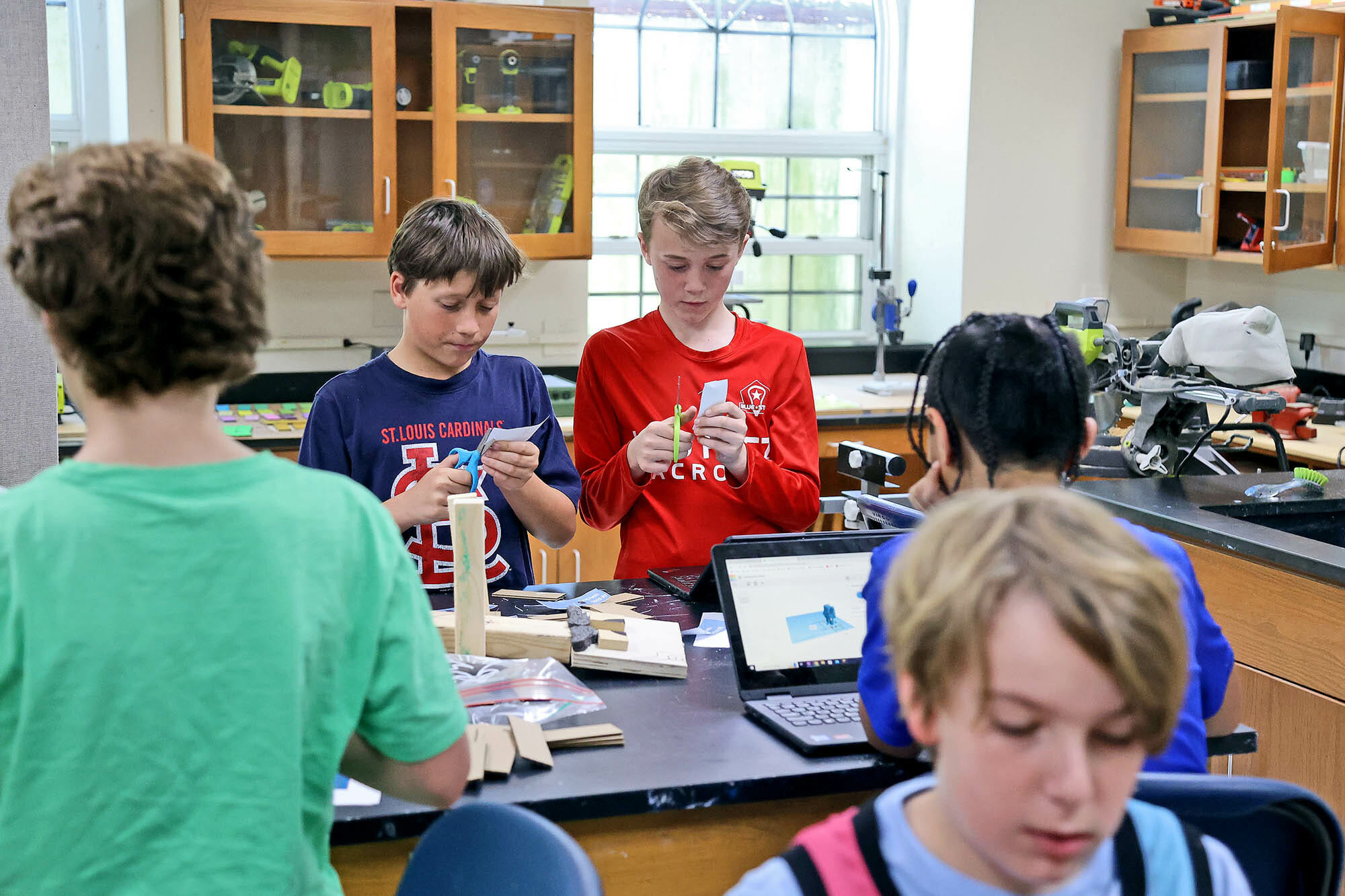Every year, Middle School Math Teachers Dustin Delfin and Kristina Jones have their students participate in a business project for math so that students can apply their math skills from the classroom to the real world. “It is a fun way to bridge real-world experiences with the mathematics students are learning,” said Delfin. “From year to year, I reflect on how to make this project better and include slight changes. This year, the change I added was incorporating the Makerspace.”
Phase 1 asked students to find a business partner and contribute part of their personal fictional savings to establish a shared business account.
Phase 4 asked students to select costs needed to run a business (patent costs, legal fees, rent, utilities, and other overhead costs). These bills were automatically withdrawn from their company bank accounts.
Phase 6 happens once all the products for each group are complete. An exchange of goods and “Delfin/Jones Dollars” will create a mini economy in the sixth-grade world. Once a product is sold, payment will be made online. Each business is asked to keep track of their products sold by completing a spreadsheet.
Phase 7 asks each student to purchase 12 products. On the wall in the back of Mr. Delfin’s classroom, each student has a designated “shelf” to store their purchased items. Businesses place the merchandise (cards) purchased by their consumers on specific shelves to complete the transaction.
Phase 8 is the last part, where students will tabulate the amount of “Delfin/Jones Dollars” they made from their sales, budget their business, and determine whether their company is making a profit or is in debt. Student companies will also calculate how much time it will take for them to become millionaires. They will use this data to generate linear equations and function tables to predict how their company will perform over time.
“This project shows students where and how the mathematics they are learning is used outside of the classroom,” Delfin said. “Ms. Jones and I hope our students will continue to see the value their mathematical skills can bring to solving real-world problems.”
Look out, world! Our sixth graders might just be future millionaires and entrepreneurs in the making, thanks to this fun math lesson!
